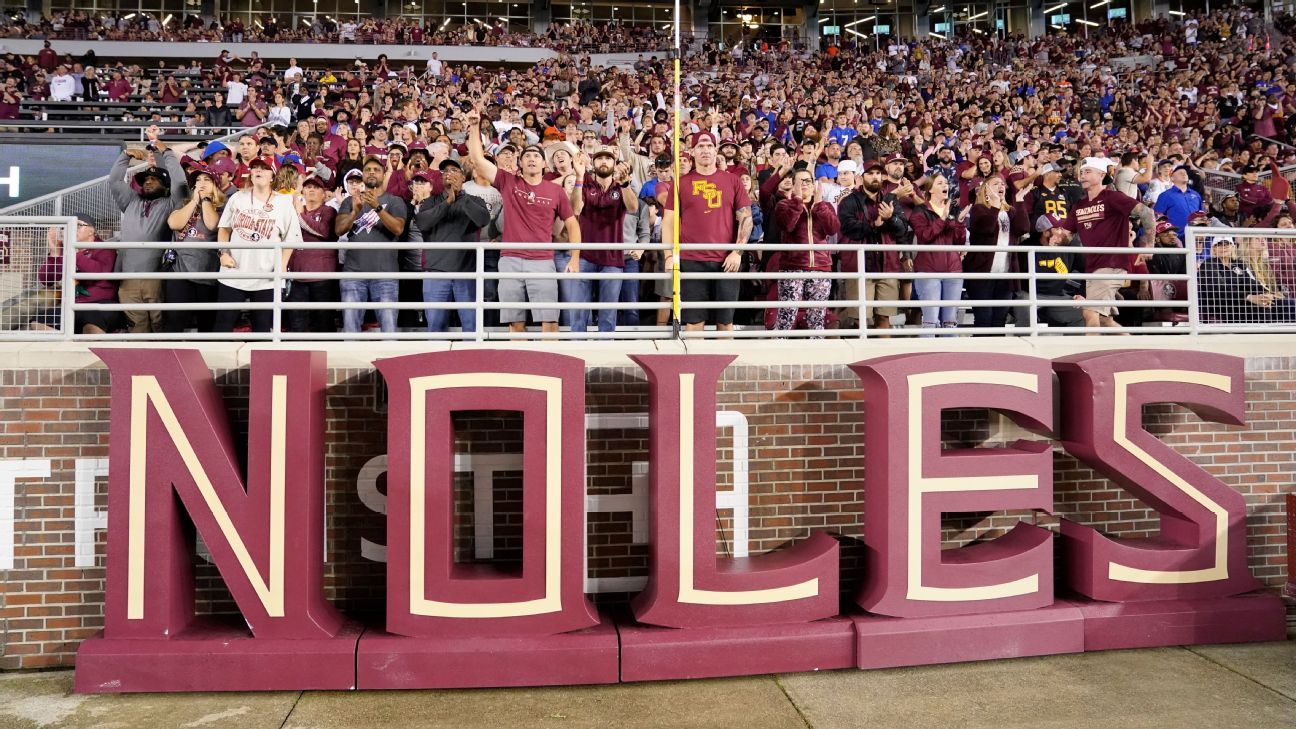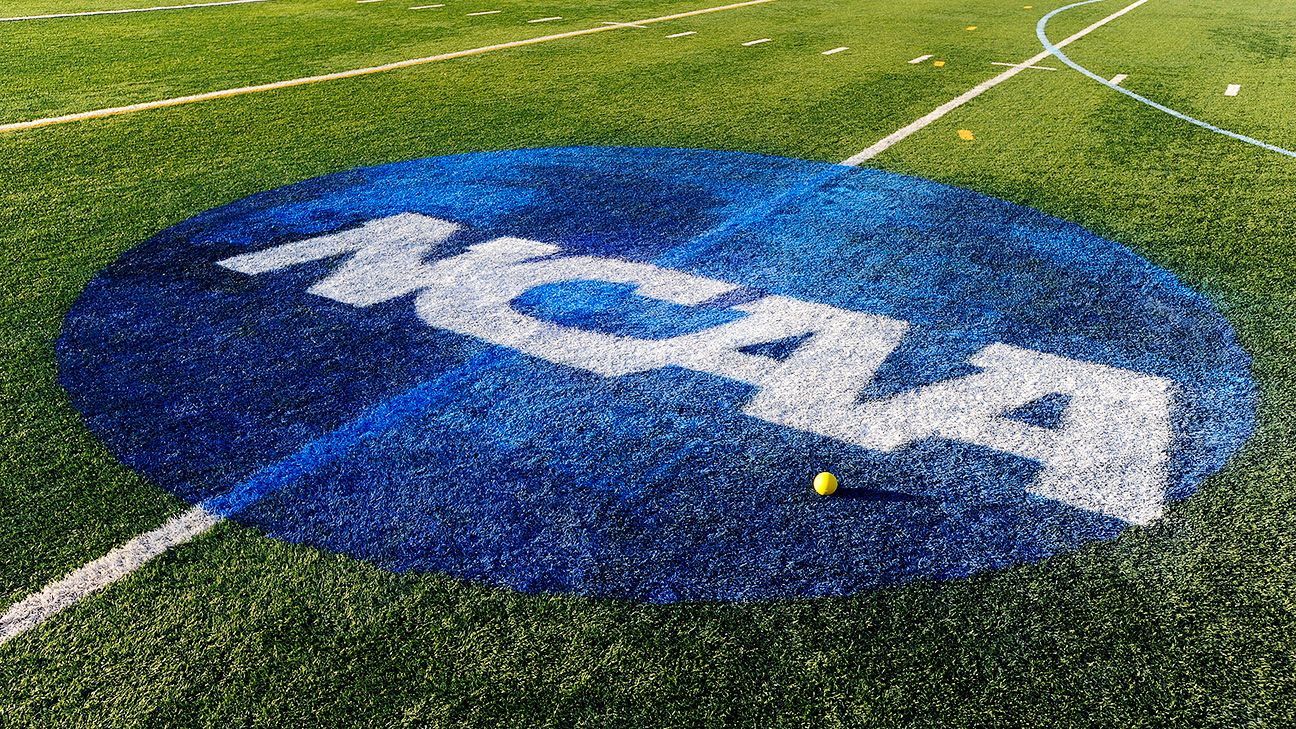
IT USED TO be that Nick Foligno, after playing a game then flying at least an hour — often to a city in a different time zone — and busing to the team hotel, would stay up until 2 a.m. or later, despite having to play another game less than 18 hours later.
Now, as a 36-year-old father, Foligno proudly shares that he’s usually in bed by 9 or 10 p.m. at the absolute latest.
Foligno is the oldest member of the Chicago Blackhawks, with more than a dozen players who are his junior by a decade or more. Watching his younger teammates this season has further validated his decision to go to bed so early.
“I’m lucky with all the young guys we have. You can see it in them,” Foligno said. “Thirty games in, they’re starting to come up to you like, ‘Man, I’m tired! This is crazy!’ So you do laugh because you’ve become that grizzled vet to it. But I remember being that age like, ‘Holy s—! We’re going to go play tonight?’ But that’s the grind of the game, and it’s what makes it what it is.”
Numerous factors make the NHL’s 82-game regular season such a grind. There’s the sheer number of games and the travel involved, which impacts some teams more than others. There’s the crisscrossing between borders and time zones at bizarre hours. There are the complications that come with such large traveling parties and the decision of when — or if — to sleep. Then there are the dreaded back-to-backs, two games in two nights.
All this while trying to win as many games as possible.
Teams and players have applied numerous philosophies to manage back-to-back games, with the recognition that there’s no perfect answer. Every situation is different.
“I hate back-to-backs more than anything.” Florida Panthers defenseman Aaron Ekblad said. “I’m a big proponent of the fact that we shouldn’t have them. … You can play every other day and your body is fine. As soon as you start throwing back-to-backs in there and play four games in six days, it leads to injuries. Guys are getting injured on back-to-backs all over the league.”
WHILE BACK-TO-BACKS are inevitable for every team, some teams have more on their schedule than others. This season, the average is 12 back-to-back sets per team, but there are outliers. The New Jersey Devils have the most back-to-backs with 16, while the Seattle Kraken have the fewest with seven. Of the 15 teams that have a dozen or more back-to-backs, all but three play in the Eastern Conference, where the travel is not as daunting as in the Western Conference.
To examine how back-to-back travel works for NHL teams and how their circumstances are different, ESPN looked at the back-to-back schedules for one team in each of the league’s four divisions: the Calgary Flames, New York Rangers, Panthers and Blackhawks.
The Rangers are in a city that’s relatively close to several teams within the Metropolitan Division and the Eastern Conference. Of their 12 back-to-back sets, eight have one home game and one road game while three have both games on the road. All but one of the back-to-back game sequences have at least one game in their home time zone, and their average flight time for the trips is one hour.
For the Panthers, playing in South Florida means they’re the southernmost team in the NHL and have only one team — the Tampa Bay Lightning — that’s less than an hour away by flight. Five of their eight back-to-backs are on the road, and only one has both games at home. Seven of those back-to-back sequences have at least one game in their home time zone, and their average flight time for the trips is 56 minutes.
Although the Blackhawks have a central location, they spend quite a bit of time in the air. Five of their 12 back-to-back sets have both games on the road, and six have at least one game in their home time zone. The Blackhawks’ average flight time for back-to-backs is 84 minutes, which means they’re going to spend nearly 30 more minutes on a plane in those situations than the Panthers and Rangers.
Of the four teams examined, the Flames seem to have the most demanding travel. Even though their eight back-to-backs are not as many as the Blackhawks and Rangers, they’re the second northernmost team in the NHL and are one of only three teams that play in the Mountain time zone. In their eight back-to-backs, three games will be played on Mountain time and their average flight time is 88 minutes.
“Sometimes, especially being in Calgary, the West has harder travel than the East,” said Flames defenseman Noah Hanifin, who played his first three seasons with the Carolina Hurricanes. “All the cities in the East are a little bit closer. For us, it can be more of a grind. The flights are also usually a little bit longer. Another thing is we’re always changing time zones. We’re going from one time zone to another in the West, which makes it a little bit tougher with the sleep schedule.”
Hanifin cited the challenges of living in the Mountain time zone. All 16 teams in the Eastern Conference are on Eastern time. Six of the Western Conference teams are on Central time, with another six are on Pacific time. The Arizona Coyotes are on Mountain time, but with most of Arizona not recognizing daylight saving time, there are two-plus months of the regular season (October, March and April) when teams there are essentially playing on Pacific time.
That leaves the Colorado Avalanche, the Edmonton Oilers and the Flames as the only teams that are based in the Mountain time zone full time. The flight from Calgary to Edmonton is just 24 minutes. Flying from Calgary to Denver takes slightly less than two hours, and Edmonton to Denver is a two-hour flight.
This season, the Flames will play 44 games in their time zone while the Rangers will have 65 games in their time zone.
“It does mess with you,” Hanifin said about being on Mountain time. “It can be a little tough on our sleep schedule, and that does add up over time.”
JONATHAN CHAREST IS the director of athlete sleep services and a behavioral sleep medicine specialist for the Centre for Sleep & Human Performance at the University of Calgary. Charest and four colleagues authored a 2021 study about the impact of distance and travel in back-to-back games in the NBA.
Charest, who also published a study on time zone changes, travel distance and performance in the NHL, said athletes are almost chronically out of order with their circadian rhythm, or internal clock. He said an Eastern Conference team that goes to Vancouver to play the Canucks is at a disadvantage because a player’s circadian clock is usually within the rhythm of his home city. For example, a Canadiens player’s body is used to games starting at 7 p.m. Eastern time. So for a game in Vancouver with a 7 p.m. Pacific time start, his circadian rhythm interprets it as being 10 p.m. Eastern time.
“When it’s the third period, it’s almost midnight for them,” Charest said. “You’ll have the commentators on the broadcast say, ‘Oh, it’s fatigue.’ It’s not necessarily fatigue; it’s that the body is answering to its own mileage. There is a fundamental disadvantage for the East Coast teams in that they have to take it one game at a time.”
Charest said it takes a day per time zone for the body’s circadian rhythm to adjust. So if the Canadiens are going to the Central time zone, it will take one day for players to adjust, while going to the Pacific time zone will require three days for their bodies to be fully adjusted.
In addition to dealing with time zone changes, just being on the road can contribute to fatigue. Charest said that makes it important for teams to manage their personnel to compensate.
“There’s some days when [a team flight] feels like it takes nine hours,” Foligno said.
The Panthers, the reigning Eastern Conference champions, have gone to great lengths to combat travel fatigue and keep players fresh over the course of a road trip. Ekblad said the Panthers’ athletic training and medical staffs bring cold tubs on every trip to offer an additional form of treatment.
When teams have a day off after a game, players are not as frantic when it comes to their postgame routines, which include everything from cooling down and getting dressed to seeing family and friends. After the first game of a back-to-back, they have to pack all those items into a much tighter window.
That’s one reason some players don’t sleep on planes when going from one city to the next on a back-to-back. The tight turnaround along with the adrenaline they have after a game leads many players to choose to stay awake rather than try to sleep because they know their sleep will get interrupted once they land.
“You still have that energy and are still fired up from the game,” San Jose Sharks forward Anthony Duclair said. “Guys tend to sleep a little later after games. You’re trying to force yourself to eat a little more and get the proper amount of rest. In the mornings, you want to sleep in. But the biggest thing is you want to get moving in the mornings and then try to get a good nap in.”
Panthers coach Paul Maurice said coaching the Winnipeg Jets while they played in the all-Canadian North Division during the truncated 2020-21 season allowed him to see value in staying over after games rather than immediately flying to the next city.
“It’s a bit of an ask,” Maurice said. “After a long road trip like Calgary, they’re going to want to get on that plane and they don’t care if they get home at 5 in the morning. But the cost of that is real. So we stay over, and we’re doing that a lot more. … We’ll give up the practice and just fly, get them back to the hotel and not get them off the plane to the hotel at 3 in the morning — that matters.”
Foligno said the Blackhawks and Boston Bruins, the team he played for the previous two seasons, provide players with supplements that include magnesium, which helps with falling asleep after a game.
Although Foligno was grateful for what the Blackhawks and Bruins did, he was impressed with how the Panthers approach being on the road.
“I wonder if more teams will adopt that,” Foligno said. “I didn’t know they did that. That’s actually pretty smart in a lot of ways.”
THE ONLY SNAG Foligno said he could see with staying over after the first game of a back-to-back would be if there was an issue that altered a team’s travel plans. He said leaving immediately after the first game provides some leeway in case something happens, such as a team needing a new plane.
Having to contend with unexpected logistics is something the Blackhawks know all too well. Earlier this season, they were flying from Edmonton to Seattle when fog diverted their flight to Portland, Oregon. Because they were flying from Edmonton, it was an international flight, so they had to wait on the tarmac. And when they finally arrived in Seattle, they were delayed by morning rush hour traffic.
“The biggest thing we worry about this time of year is the weather, and we can’t control that,” Blackhawks coach Luke Richardson said. “The last time [the Blackhawks came to Seattle], it wasn’t a back-to-back, but we lost a practice day because we didn’t get in until morning. We lost a day of practice, which is discouraging for a coach because you feel that’s the one time you can work on something.”
That is what makes team services personnel among the most valuable employees throughout the NHL.
From making sure the plane and flight crew are ready to leave on time to lining up charter buses and making sure a hotel can seamlessly accommodate a 55-person traveling party no matter the time of day or night, the team services crew is in charge of everything related to travel.
“With back-to-backs, fortunately, you’re never traveling four hours or losing too much off the clock,” said Sean O’Brien, who is the director of team operations for the Flames, “You want to get into the next city, get settled and, personally for me, you want to be ready if there is any sort of issue with something like weather. At least you’re in the next city. If you wait until the next morning, you don’t know what variables you’re dealing with.”
O’Brien, who has been in his role for 17 seasons, said the work doesn’t stop once a team reaches its hotel. While the players are sleeping, a team’s support staff will get up early to handle other items, such as breakfast and making sure there are ample conference rooms so the team can hold meetings without interruption.
EVEN WITH ALL those considerations, teams playing back-to-back games have won their share.
There have been 3,090 games played as part of a back-to-back over the past five seasons, according to ESPN Stats & Information data. (Some games are counted twice, when both teams were on a back-to-back.) The record for the team on a back-to-back in those games on either leg is .531. The winning percentage on the first half of a back-to-back is .555, while the winning percentage in the second half is .507.
Over that time, 25% of teams have won both games of a back-to-back and 30% have lost both. The winning percentage for the home team in either part of a back-to-back is .553, while the winning percentage for the road team is .520. A little more than 700 of those 3,090 games went to overtime.
“It’s not so much the back-to-back. It’s what goes on around the back-to-back,” Maurice said. “A back-to-back is not that difficult. But when you get into four [games] in six [nights] — if you get a four-game week, and we’re going to have one at the end of March and [another] in early April. Then they stack another four-game week up. So you’re not going to be playing eight games at home. You’re going to be traveling, and that’s where they get you.”
The sequence of games Maurice referenced is when the Panthers play five times (with one back-to-back) from March 23 to March 30. Then, from April 1 to April 6, they have another four games, with a back-to-back in the first two.
If players had a say in trying to manage back-to-backs over an 82-game schedule, what would they change?
“Guess you could say get rid of them and just play less games,” Panthers defenseman Brandon Montour said with a smile. “Earlier in a trip, I guess, maybe? You never really want it at the end of a trip. Or closer proximity with who you’re playing. That way you’re not huffing it on a flight to Florida to play the next night.”
Duclair said he would have back-to-backs on the front end of a trip. That would allow teams to settle into a regular routine for the rest of the trip.
Foligno said he doesn’t believe back-to-backs are the worst experience. But he does feel as if the travel logistics make it hard to “put the best product on the ice.”
“I know everyone goes through it and has a bad schedule,” Foligno said. “Some teams have way more back-to-backs than others, which I don’t understand how that works. You want the best product on the ice, and you’ve got to give guys a chance to recover and give their best too. That’s the frustrating part. … You want to give yourself the best chance to win. That’s where I get a little frustrated, but it happens to everyone.”
Ekblad suggested there could be alternatives. He said one way to make back-to-backs more manageable would be if the team playing on consecutive days was at home for both games. Or perhaps back-to-backs could be two games against the same opponent in the same city to eliminate travel and boost recovery.
He also had another idea.
“Abolish them. Get rid of them.” Ekblad said. “I mean, football players complain about Sunday to Thursday. That’s three to four days in between. We’re literally less than 24 hours in that time and that’s with travel. It’s nuts. It’s a high-speed game. Some cities don’t have the best ice. I’m not going to name any of them. The risk on the players is way more. I’m the [NHL Players’ Association] rep for the team, so I am just a big believer in player safety and taking care of things.”












